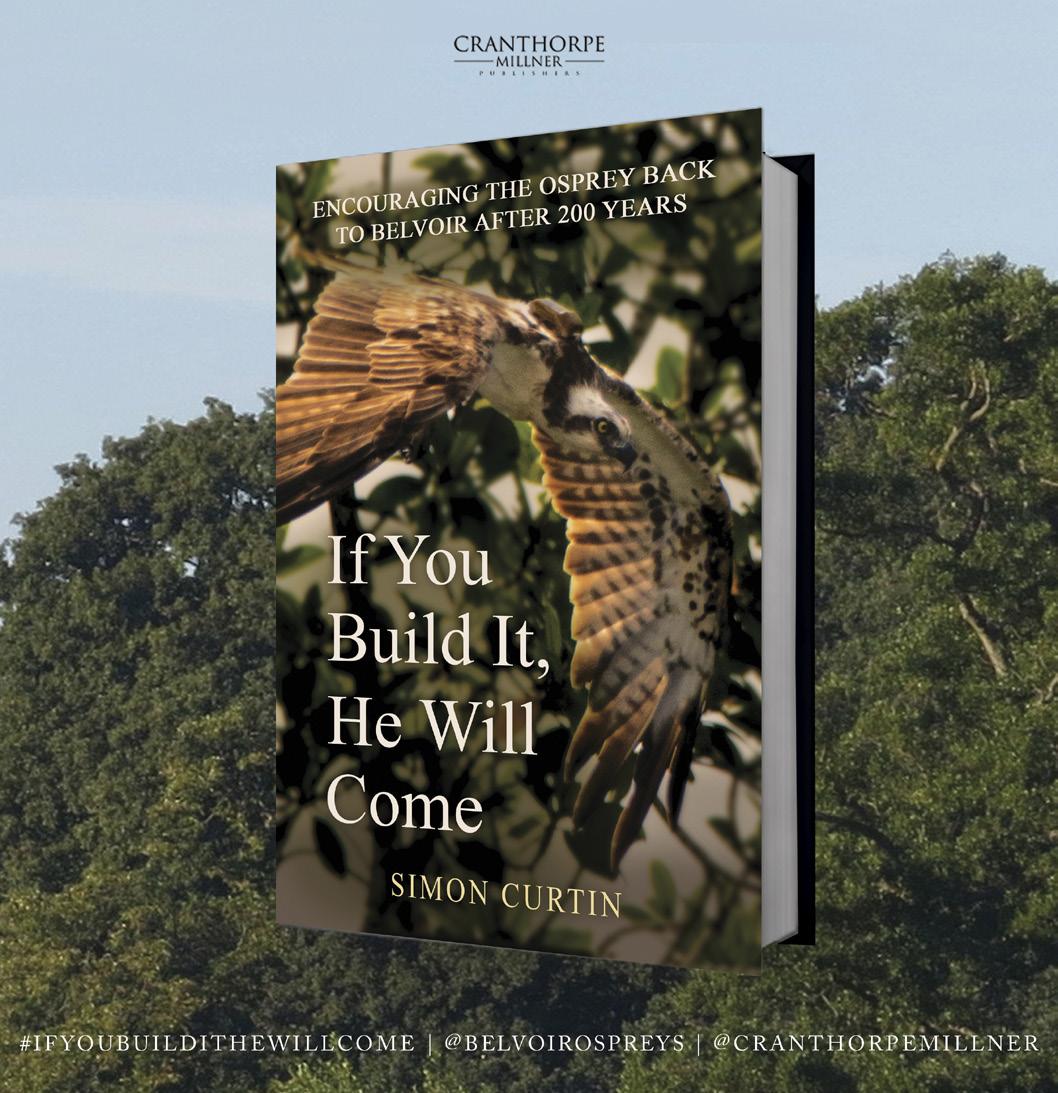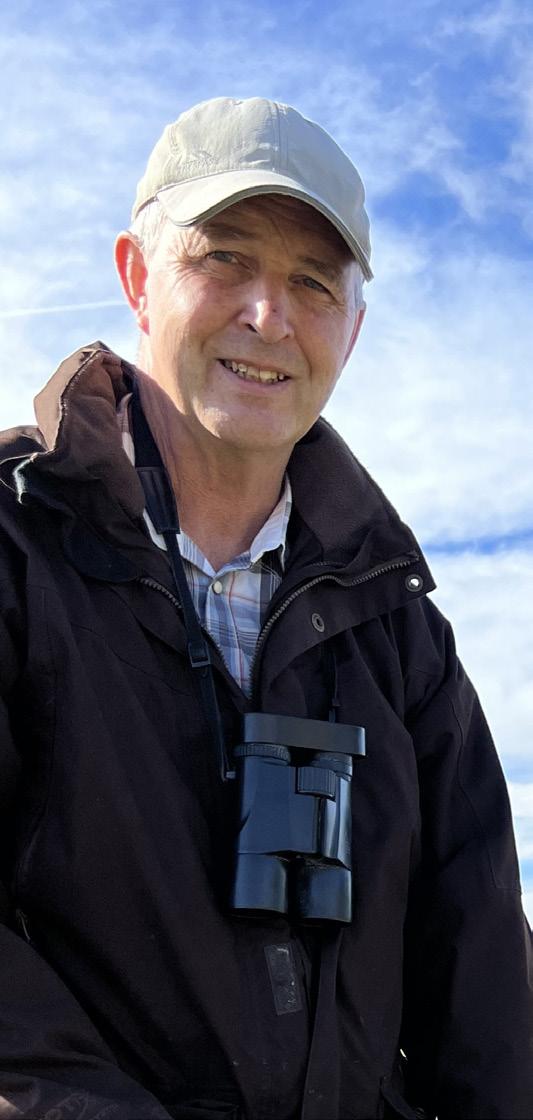
4 minute read
IF YOU BUILD IT, HE WILL COME
New Nature Memoir From Local Author Shares Unique Personal Account of the Captivating Belvoir Osprey Project
Lincolnshire author and long-term resident Simon Curtin has recently published his non-fiction book, titled If You Build It, He Will Come, about his eight-year quest to encourage the osprey back to nest near Belvoir Castle, over 200 years after they became extinct as a breeding bird. The book follows the marathon project from its humble beginnings, as a thought and ambition in the author’s mind over thirty years ago, through the many ups and downs to its ultimate conclusion, setting out the ‘ten steps to success’ for encouraging ospreys to breed. The project was not a lone effort, with Simon working alongside osprey expert Dr Tim Mackrill and colleagues at the Rutland Water project to make the project a success.
To see an osprey fish is an amazing spectacle, and one of the reasons why Simon fell in love with this bird. Ospreys were once widespread in the United Kingdom, but were unfortunately persecuted and shot by humans to extinction in the late eighteenth and early nineteenth centuries. Major conservation ‘translocation’ projects were undertaken in Scotland in the 1950s and at Rutland Water in the 1990s to reestablish populations of ospreys. Simon’s hope with the book is that it will encourage the continued expansion of ospreys away from the initial few translocation points to breed in every county and region of the UK once again. It is a slow and patient process.
The migration of birds, and ospreys in particular, is an amazing phenomenon. Much has been learnt by fitting ospreys with lightweight transmitters that can track their movements over time using satellites. The male osprey in Simon’s story, known as Blue 4K, was fitted with a transmitter in 2018 and has provided some amazing data to scientists. Each Autumn he flew approximately 3,000 miles south from the Belvoir area to Guinea on the west coast of Africa, stopping off at the same favourite fishing spots to rest and eat. The sad fact is that while ospreys produce 2-3 young each year, only 20-30% of these young survive their first migration. That is why Simon is so passionate about encouraging others to start osprey projects of their own. If the platform had been sited less than a mile further east, the nest would have been in Lincolnshire rather than Leicestershire, and Simon hopes that soon Lincolnshire will have ospreys nesting too. While ospreys need waterways, canals, ponds and lakes for the fish they eat, they prefer nesting away from water, where it is generally more private. Nesting platforms sited in farmers’ hedgerows have been very successful and Simon hopes that out there in Lincolnshire is a farmer who is keen to host a platform, who will get in touch to start their own quest!
Reviews
“A book that imparts a large and important message about how to make a difference in this world.”
Mark Cocker, multi-award-winning author and naturalist
“Help the Osprey to become a welcome bird all over Britain. Here’s how to do it!”
Tony Soper, British naturalist and author
About Simon Curtin
Simon Curtin has been interested in all wildlife for over 50 years, and has a BSc Hons degree in Agricultural Sciences, majoring in Plant Biochemistry. After a successful senior management career in marketing, sales and logistics, Simon retired at the age of 42 and decided to focus his time and efforts on a project of his own.
Simon started the Belvoir Osprey project in 2014, and any personal profits he receives from the book’s publication will be donated to wildlife conservation charities, such as the Roy Dennis Wildlife Foundation. If You Build It, He Will Come is published by Cranthorpe Millner and is available to purchase from all major retailers at £10.99.











